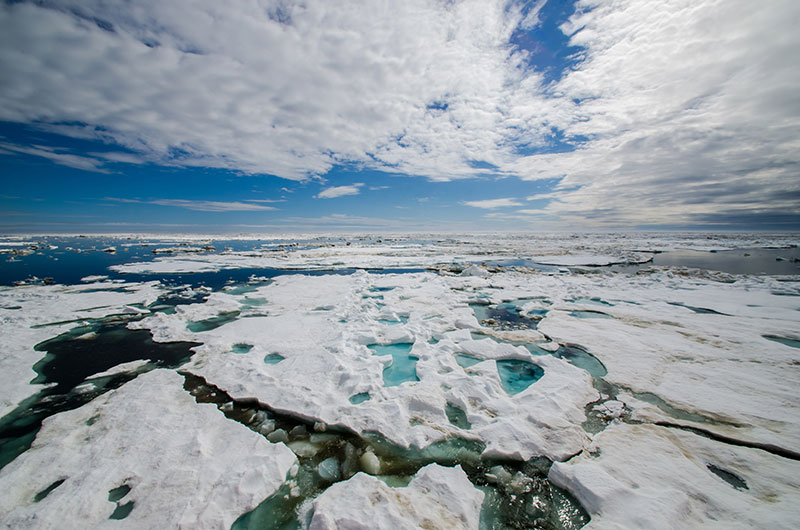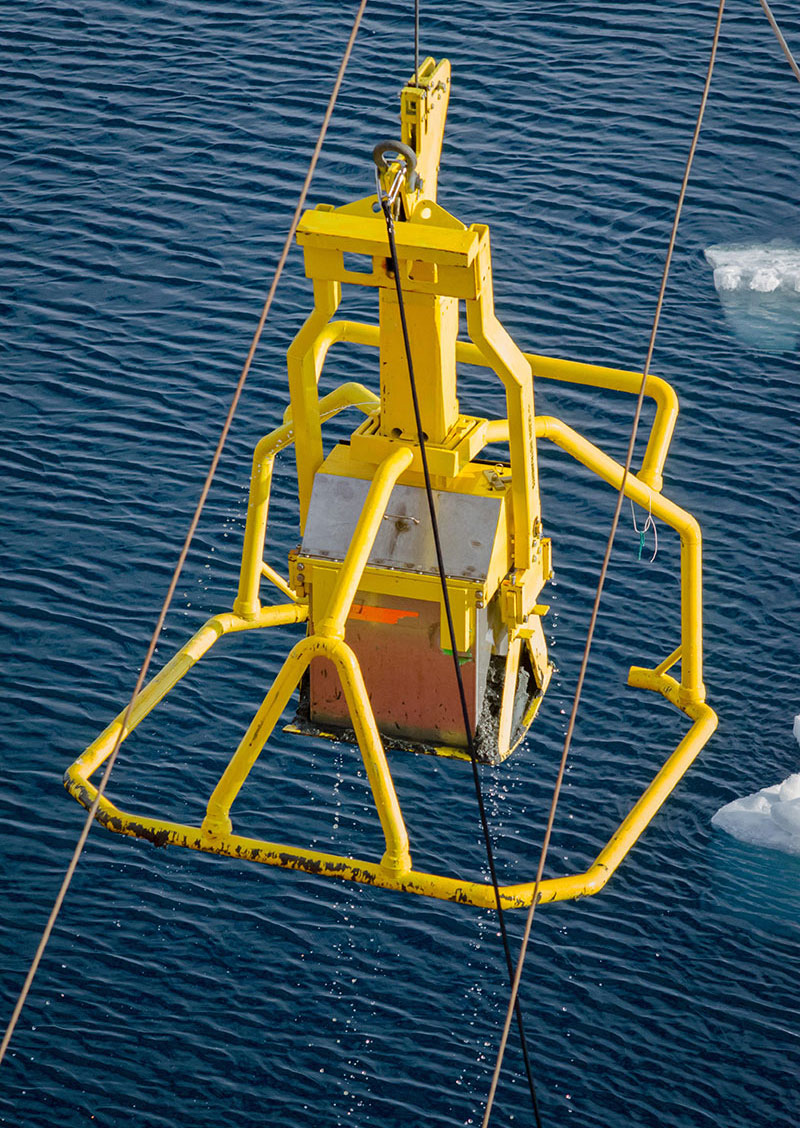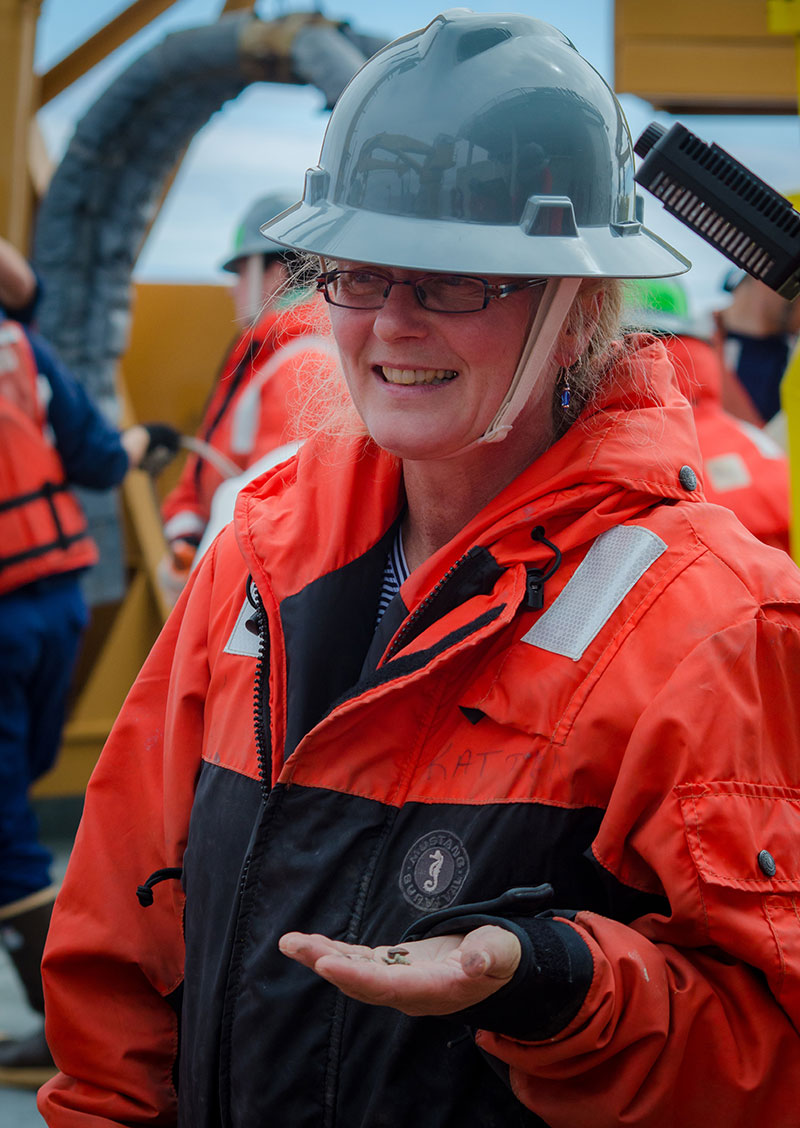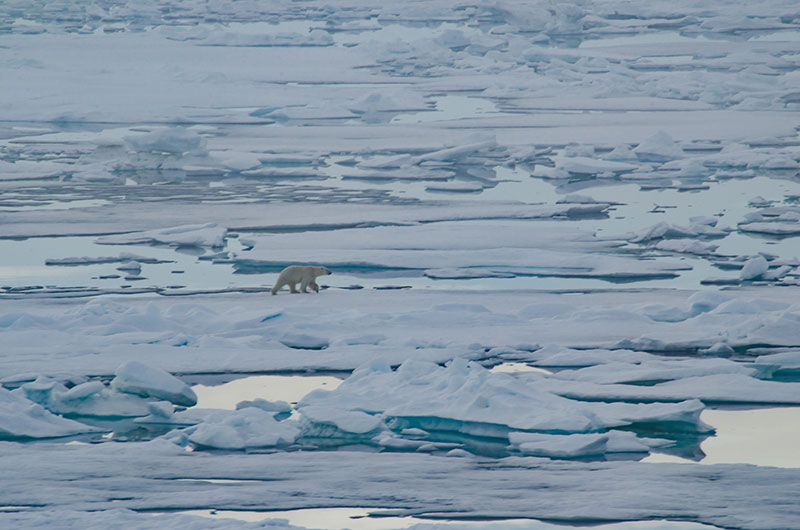
By Caitlin Bailey, Web Coordinator, Global Foundation for Ocean Exploration
July 8, 2016
Welcome to the Arctic video! Some initial impressions on crossing into the Arctic Circle. Video courtesy of Caitlin Bailey, GFOE, The Hidden Ocean 2016: Chukchi Borderlands. Download larger version (mp4, 5.4 MB).
The air gets noticeably crisper as we pass through the Bering Strait, approaching the Arctic Circle. Members of the science team gather on the bridge to experience this momentous occasion. Many of us have never been this far north nor have seen sea ice. When we cross, there isn’t a dotted line in the water or ice at the edge, but a feeling of “we finally made it.” In fact, it will be a full 17 hours before we see our first sea ice.
Before we hit the sea ice, the science team tests their instruments in water. Both scientists and Coast Guard personnel gather on the aft deck to practice the motions of a scientific deployment. The benthic team deploys their box core instrument, successfully taking a sample of the soft sediment 40 meters below the ocean surface. The sample includes the first collected organisms of the expedition: brittle stars, polychaete worms, and bivalves (see the Arctic Seafloor Fauna background essay). The pelagic team then deploys a plankton net, collecting the microscopically small animals drifting through the water (see the Zooplankton of the Arctic background essay)

The beautifully dramatic Arctic landscape spans across the horizon. Image courtesy of Caitlin Bailey, GFOE, The Hidden Ocean 2016: Chukchi Borderlands. Download larger version (3.1 MB).
Finally, the CTD, an instrument that measures conductivity, temperature, and ocean depth, is deployed off the starboard side of the Healy to gather data that are important for all of the science teams. The instrument is part of a larger apparatus that includes a rosette water sampler to collect water at discreet depths and instruments that help to record and categorize various plankton sizes and types. The water is filtered for bacteria and viruses by the microbial team. The ship is buzzing with a happy science team, ready to conduct research in the Chukchi Borderlands.

The box core instrument successfully brings up muddy sediment from the ocean bottom. Image courtesy of Caitlin Bailey, GFOE, The Hidden Ocean 2016: Chukchi Borderlands. Download larger version (jpg, 4.2 MB).

Benthos scientist Katrin Iken holds a couple of small bivalves collected from the box core. Image courtesy of Caitlin Bailey, GFOE, The Hidden Ocean 2016: Chukchi Borderlands. Download larger version (jpg, 3.4 MB).
The first pieces of sea ice begin to float by early in the morning. They are sparse at first, but by mid-afternoon, the Healy is shaking as she plows through the ice. The Coast Guard does its best to find the route with the least amount of ice possible to reduce the need to cut through the larger, thicker sea ice. There are multiple sightings of walrus and seals both on the ice and in the water. Then, in the evening, we see an animal that we did not expect to see so soon: a polar bear. Both scientists and Coast Guard alike were thrilled to watch the bear walk effortlessly across the white landscape.
The Arctic has welcomed the Healy home.

A polar bear effortlessly crosses the ice in its Arctic home. Image courtesy of Caitlin Bailey, GFOE, The Hidden Ocean 2016: Chukchi Borderlands. Download larger version (3.2 MB).